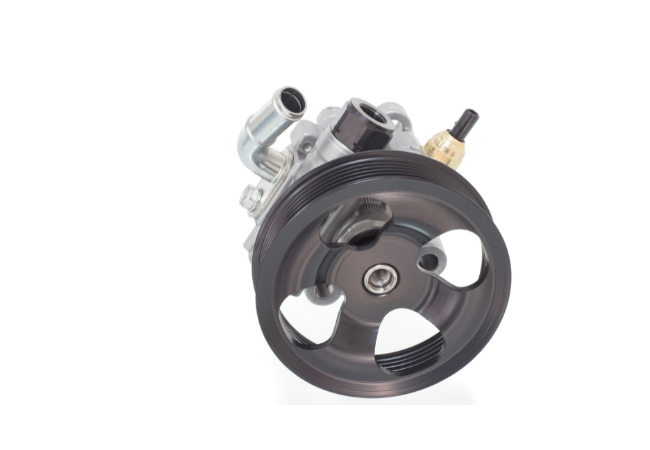When it comes to the question, “Can I just add power steering fluid?” there’s more to consider than simply topping off your car’s reservoir. In this comprehensive guide, we will delve into the importance of power steering fluid in vehicles and explore the different types available on the market.
Furthermore, you’ll learn how to accurately locate your vehicle’s power steering reservoir by identifying its correct placement and consulting your owner’s manual for specific information. We will also discuss techniques to prevent air from entering your system during maintenance procedures and address potential complications that can arise due to improper care.
In addition, our guide covers methods for safely removing old power steering fluids using dedicated extractor tools or turkey basters while adhering to manufacturer guidelines. Lastly, we’ll help you identify low power steering fluid symptoms such as difficulty turning the wheel, unusual noises during maneuvers, and visible stains on pavement surfaces so that you can confidently answer “Can I add power steering fluid?” with a thorough understanding of proper maintenance practices.
Jump To
Understanding Power Steering Fluid

Power steering fluid is a crucial component in your vehicle’s power steering system, helping to transfer energy and maintain smooth operation. Over time, the fluid can accumulate worn material, moisture, and other debris while also wearing out due to oxidation. It is essential to know the type of power steering fluid recommended for your vehicle; some use automatic transmission fluid (ATF), while others require synthetic variants.
Importance of Power Steering Fluid in Vehicles
The primary function of power steering fluid is to facilitate easy movement of the steering wheel by reducing friction between various components within the system. This enables drivers to maneuver their vehicles with minimal effort. Additionally, it helps protect these components from corrosion and premature wear caused by heat generated during normal operation.
Types of Power Steering Fluids
-
Automatic Transmission Fluid (ATF): Many vehicles utilize ATF as their power steering fluid because it has excellent lubricating properties that help reduce friction within the system. However, not all ATFs are compatible with every vehicle; always consult your car’s manual for specific recommendations.
-
Synthetic Power Steering Fluid: Synthetic fluids offer superior performance compared to conventional ones due to their ability to withstand extreme temperatures without breaking down or losing viscosity. They are often required for modern high-performance vehicles or those equipped with electric/hydraulic systems.
-
Dedicated Power Steering Fluid: Some manufacturers recommend using a dedicated power steering fluid designed specifically for their systems rather than ATF or synthetic alternatives. These fluids may contain unique additives tailored for optimal performance in certain vehicles.
Using the wrong kind of power steering fluid can lead to decreased effectiveness or even harm power steering systems, so it is critical to use the proper type for your car. Always consult your vehicle’s manual or a professional mechanic if you are unsure about which fluid is appropriate for your specific make and model.
Locating Your Vehicle’s Power Steering Reservoir

To add or change your vehicle’s power steering fluid, you need to locate its reservoir first. Typically, the reservoir is stored in a clear plastic container near one of the wheels. Consult your owner’s manual for specific recommendations regarding its location and fluid level before proceeding with any maintenance tasks involving these components.
Identifying the Correct Reservoir for Adding or Changing Fluids
The power steering pump reservoir is usually located under the hood and can be identified by its distinct cap label indicating “Power Steering Fluid” or similar wording. It may also have a symbol resembling a steering wheel on it. Be cautious not to confuse this with other reservoirs such as brake fluid, coolant, or windshield washer fluid containers. If you are unsure which one is correct, refer back to your vehicle’s manual for clarification.
Consulting Owner’s Manual for Accurate Information
-
Reservoir Location: The exact location of the power steering reservoir varies between different makes and models of vehicles. To find yours quickly and easily, consult your owner’s manual where there should be an illustration pointing out all essential engine components including the power-steering-fluid container.
-
Type of Fluid: Different vehicles require different types of fluids based on their specifications; some use automatic transmission fluid (ATF), while others require synthetic variants like Dexron VI ATF. Always check what type is recommended by consulting your manufacturer’s manual before adding any new liquid to this vital system component.
-
Fluid Capacity: Your owner’s manual will also provide information on the right fluid level capacity for your vehicle. Overfilling can cause issues, so it is essential to know how much power steering fluid should be added.
Avoiding Potential Complications Caused by Improper Care Techniques
-
Maintain cleanliness: When handling any part of your car’s power steering system, ensure all tools and surfaces are clean to minimize contamination risks. Additionally, use only fresh and unopened bottles of recommended new fluid when topping up or replacing fluids.
-
Bleed out trapped air: After completing maintenance tasks involving your vehicle’s power steering fluid reservoirs, such as changing filters or refilling containers, it may become necessary to bleed out any remaining pockets containing unwanted gases that have accumulated inside lines connecting various components together throughout your system. This process helps maintain optimal performance levels within each individual unit involved. For detailed instructions on how to accomplish this task, consult your vehicle’s service manual.
-
Monitor fluid levels: Regularly check the power steering fluid reservoir level to ensure it remains within recommended levels. This can help prevent air from entering the system and causing potential damage or performance issues.
Removing Old Power Steering Fluids Safely
When it comes to maintaining your vehicle’s hydraulic power steering system, removing old fluids is a crucial step in ensuring optimal performance and preventing potential issues down the road. There are several methods available for safely extracting worn-out power steering fluid from your car’s reservoir.
Using Dedicated Extractor Tools or Turkey Basters for Fluid Removal
Dedicated extractor tools, specifically designed for removing automotive fluids, can be an excellent investment if you frequently perform DIY vehicle maintenance tasks. These devices make it easy to extract old steering fluid without causing any damage to the reservoir or surrounding components.
If you don’t have access to a specialized tool, an alternative is available. A simple turkey baster can also get the job done effectively. To use this method:
-
Carefully insert the turkey baster into the power steering fluid reservoir.
-
Squeeze the bulb of the baster gently while submerged in the fluid to create suction.
-
Pull out as much of the old liquid as possible before releasing pressure on the bulb and disposing of extracted material properly according to local regulations.
Following Manufacturer Guidelines for Proper Maintenance
To ensure that you’re taking care of your vehicle’s power-steering system correctly, always follow manufacturer guidelines outlined within relevant documentation like user manuals. These resources provide valuable information on the proper type of power steering fluid to use, as well as how often you should replace it.
Some manufacturers recommend a complete power steering systems flush of the system at specific intervals, while others may only require topping off old power steering fluid with new fluid when levels become low. Heed the guidelines to maintain your car’s power steering system in top shape over time.
In addition to following manufacturer recommendations, always take care when working with automotive fluids. Wear protective gloves and eye protection if necessary, and dispose of used fluids according to local regulations or recycling programs available in your area.
Removing old power steering fluids safely is a critical step in maintaining your car’s performance and reliability. Identifying low-power steering fluid symptoms can help you determine when it’s time to add more fluid.
Key Takeaway:
To maintain the correct fluid level in your vehicle’s power steering system, it is crucial to remove old fluids safely. You can use dedicated extractor tools or a turkey baster for synthetic fluid removal and always follow the manufacturer’s guidelines for proper maintenance. Remember to wear protective gear and follow safety precautions when working with automotive fluids and dispose of excess fluid, like engine oil, properly according to the automotive industry.
Identifying Low Power Steering Fluid Symptoms

Being aware of the common symptoms indicating that your power steering fluid levels might be running low is essential for maintaining optimal performance and preventing potential issues down the road. Signs to look for that could indicate low steering fluid reservoir levels will be discussed in this section.
Difficulty in Turning the Steering Wheel
If you notice that turning your steering wheel has become increasingly difficult or requires more effort than usual, it could be a sign of low power steering fluid. The hydraulic fluid assistance provided by the fluid helps make turning easier, so when there’s not enough of it in your system, you may experience stiffness or resistance while maneuvering.
Whining or Screeching Noises During Maneuvers
Loud whining or screeching noises coming from beneath the hood during turns can also indicate an issue with your car’s power steering fluid. These sounds are often caused by air entering into the power steering pump, which happens when there isn’t enough old fluid to keep everything lubricated properly. If left unaddressed, this could lead to further damage to your vehicle’s hydraulic system.
Visible Stains on Pavement Surfaces
-
Puddles: If you see puddles forming under your parked vehicle after extended periods of idling, it might be due to a leak in either the reservoir itself or one of its connecting hoses. Inspect these components for any visible signs of damage and consult a professional if necessary.
-
Discoloration: Another sign to look out for is discoloration on the pavement where your car has been parked. Power steering fluid, like transmission fluid, can leave behind a reddish-brown stain when it leaks onto surfaces such as concrete or asphalt.
FAQ’s
Can I Add Power Steering Fluid?
If you’re a vehicle maintenance pro, you know that keeping your car’s power steering fluid at the correct level is essential for the proper functioning of your power steering pump system. If you’re wondering whether you can just add power steering fluid to your car, the answer is yes, you can. Here’s what you need to know.
Can You Add New Power Steering Fluid to Old?
It is generally safe to add new power steering fluid to old fluid. However, if there are signs of contamination or significant wear in the existing old fluid, a complete flush may be necessary. Consult your vehicle’s manual for guidance on when a full power steering flush is required.
Can You Add Power Steering Fluid to a Hot Car?
It’s best practice to wait until your vehicle has cooled down before checking and adding any fluids, including more power steering fluid. Adding power steering fluid while the engine is hot could lead to inaccurate readings due to thermal expansion – power steering fluid expands.
Conclusion – Can I Just Add Power Steering Fluid
Understanding the importance of power steering fluid level, locating your vehicle’s reservoir, preventing air from entering your system, removing old fluids safely, and identifying low power steering fluid symptoms are all crucial steps in properly maintaining your vehicle’s power steering system. It is important to consult your vehicle’s manual for accurate information on adding or changing fluids and to follow the manufacturer’s guidelines for proper maintenance and not use the wrong fluid.
Remember, if you experience low-power steering fluid symptoms such as difficulty turning the wheel or whining noises during maneuvers, it may be a sign that you need to add enough fluid or have other steering rack issues with your system. It’s always advisable to get professional assistance when uncertain about maintaining your car.

